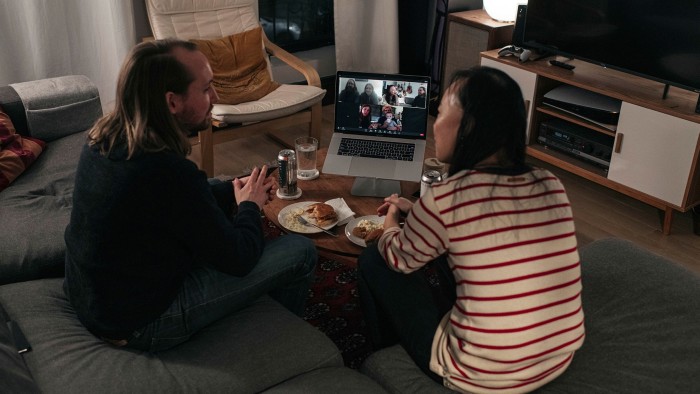‘Zoom fatigue’ brought into focus by Stanford study

Roula Khalaf, Editor of the FT, selects her favourite stories in this weekly newsletter.
Researchers at Silicon Valley’s Stanford University have confirmed what millions of remote workers already knew: “Zoom fatigue” causes greater stress than meeting in real life because of the “non-verbal overload” of endless video calls.
A study by Jeremy Bailenson, professor of communication and founding director of the Stanford Virtual Human Interaction Lab, found that the underlying causes of Zoom fatigue include “excessive amounts of close-up eye gaze” and “increased self-evaluation from staring at video of oneself”.
“Zoom users are seeing reflections of themselves at a frequency and duration that hasn’t been seen before in the history of media — and likely the history of people,” Bailenson wrote.
Some of these problems could be solved with “trivial changes” to Zoom’s user interface, he suggested, such as automatically hiding the “selfie” window that reflects the user back at themselves after the first few seconds of a call.
Bailenson also recommended that Zoom users themselves could make simple changes to reduce the strain, such as shrinking the size of the video window so that other faces do not feel so close.
More video meetings should simply be conducted as phone calls, he added.
Bailenson’s paper, published this week in the journal Technology, Mind, and Behavior, is billed by Stanford as the “first peer-reviewed article that systematically deconstructs Zoom fatigue from a psychological perspective”.
It is accompanied by a separate study, not yet peer reviewed, that uses a “Zoom Exhaustion and Fatigue” scale to measure the impact. After thousands of people completed a questionnaire, Bailenson said there was a “strong theoretical reason to predict” that women were more affected than men by seeing video of themselves all day.
Millions of knowledge workers around the world have now spent the best part of year in spare bedrooms and home offices, as the pandemic and waves of lockdowns forced office closures.
Video conferencing apps such as Zoom, Microsoft Teams and Google Meet have boomed as a result. Zoom’s share price has almost quadrupled in the last year, giving it a market value of more than $100bn.
Bailenson said he thought that Zoom was “awesome” and “works fantastically” but had become a “punching bag” for frustrated office workers. “We can’t control a lot of our lives but we can yell about Zoom,” he said in an interview with the FT.
He acknowledged that the problems of Zoom fatigue paled in comparison with the daily trauma faced by medical staff in overloaded hospitals. Even in developed countries, millions of people lacked access to reliable broadband connections and many could not afford the hardware required to make video calls.
Nonetheless, the Stanford research underlines the mental burden of being forced to sit in front of a camera and stare at screens filled with faces — including our own.
“On Zoom, behaviour ordinarily reserved for close relationships — such as long stretches of direct eye gaze and faces seen close up — has suddenly become the way we interact with casual acquaintances, coworkers, and even strangers,” Bailenson wrote.
Bailenson said he had tried to speak to Zoom about his findings but was “still waiting for that meeting to be scheduled”.
Letter in response to this article:
Comments